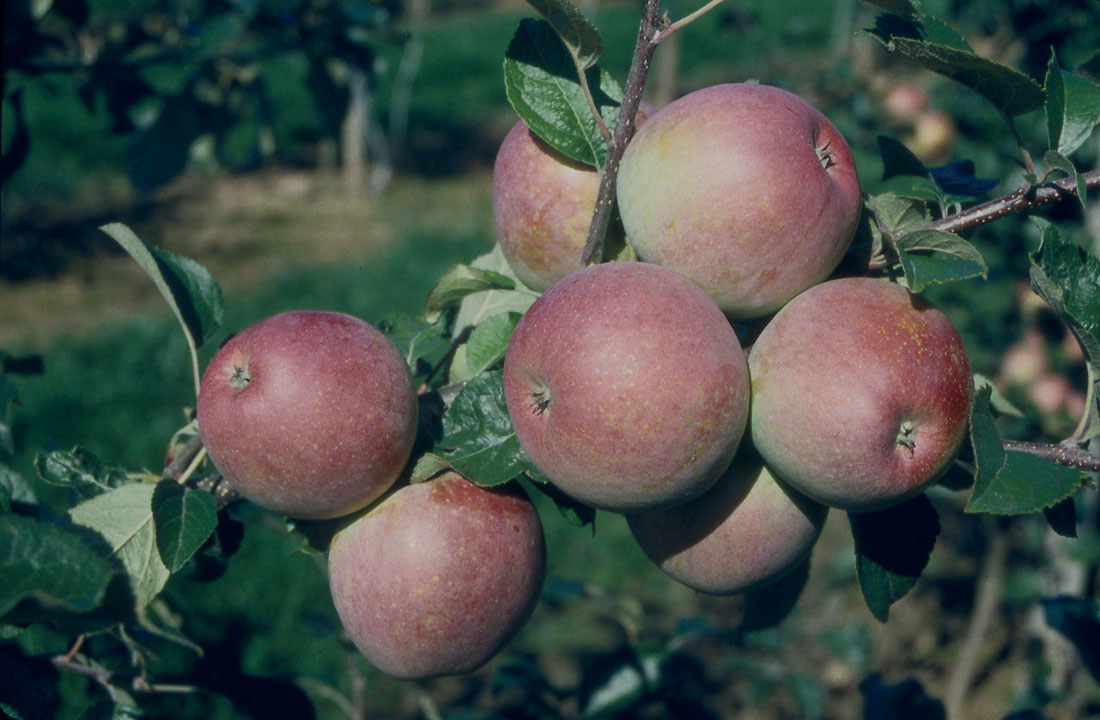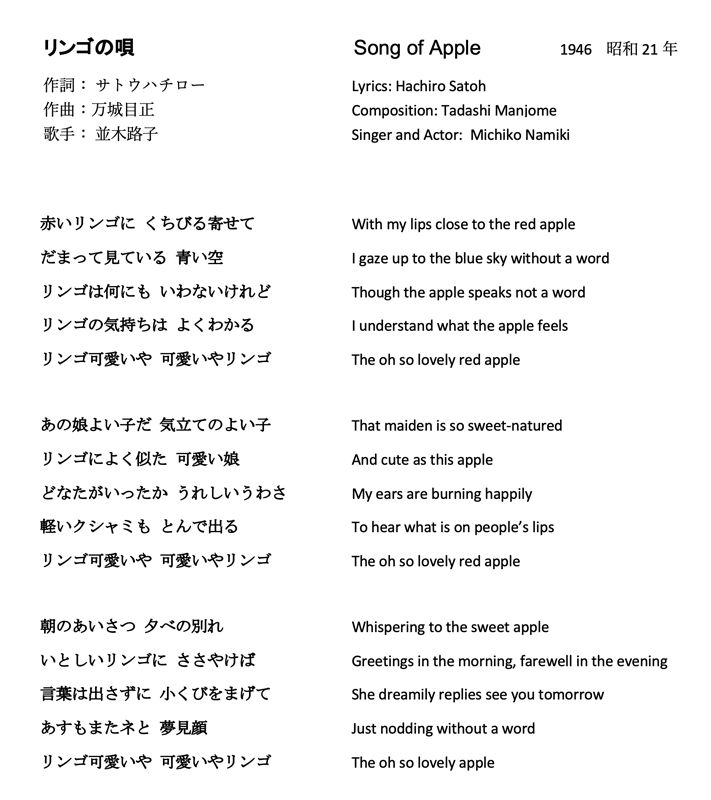Apple Number One
Fuji tops the world apple production chart and is grown around the world.
On 21st April 1962, the Fuji apple variety was registered at Japan’s Ministry of Agriculture and Forestry with the prescient title ‘Apple No. 1 of Agriculture and Forestry’. Today Fuji is by far the world’s most grown commercial apple, more than a third of all apples.
The Fuji story began 23 years earlier in 1939 at Tohoku Fruit Tree research station near Fujisaki, Japan. Part of a breeding programme to create an apple suited to the Japanese climate and palate, 64 crosses were made between 20 apple varieties.
What was to become Fuji was propagated by hand-pollinating flowers of old US variety Ralls Janet with pollen from Delicious. Pips from the resulting apples were germinated and seedlings planted out in 1940. With the onset of war, when fruit-growing was not a priority, staff had to leave the young seedlings.
“Nevertheless, thanks to the effort of the staff and help from local people, by some miracle the seedlings survived”
Shichiro Tsuchiya
Returning after the war, staff transplanted the seedlings, and in 1951 one of 596 seedlings of Ralls Janet x Delicious, code-named Ro-628, fruited for the first time and was identified as “a promising individual”. In 1958, its qualities confirmed, grafts were taken to conserve the variety and distribute to growers.
A large, sweet, crisp, and juicy apple which crops well, Fuji quickly became popular with growers and consumers. Supermarkets also like that it maintains firmness when stored and handles well.
There was much consideration at the research station about what to call this new apple and Fuji was settled upon.
“The name suggested a world-class apple that would spread widely like the foothills at the base of Mt. Fuji, the highest mountain in Japan, and a symbol of the country”
Shichiro Tsuchiya
It also references Fujisaki where the apple was propagated, and actress Fujiko Yamamoto who was well known at the time.
Today, Fuji tops the world apple production chart with some 30 million tonnes produced annually worldwide, perhaps 150 billion apples.
The original Fuji tree, Ro-628, still stands in Morioka. All other Fuji trees trace back to grafts from it.
Fuji – Apple Number One – is testament to the foresight of the Japanese horticulturalists and the fortitude of apple trees.
‘Song of Apple’
The ‘Song of Apple’ (Ringo no Uta’) was used as a featured song in the movie ‘Gentle Breeze’ (‘Soyokaze’) released in October 1945, the first post-war movie in Japan. In the following year, the song was released as a single and became a big hit. This song encouraged people living amongst the ruins of burnt-out houses and desperate food shortages, to feel the breath of resurgence in the air. (YouTube video from saraba9oibito)
Extract from Development of Fuji by Shichiro Tsuchiya from the book 60 years of Apple Fuji. Edited and translated for Apples & People by Shinji Nakamura.
This provides further detail about the development process:
60 years of Apple Fuji read by Shinji Nakamura in Japanese
Shinji Nakamura is a freelance technical translator specialising in localisation of software and hardware, mainly in the IT and automotive industries. He is also community interpreter as part of Hereford Language Network. Shinji moved to Herefordshire from Japan 30 years ago for his children to join Hereford Waldorf School (now Steiner Academy Hereford).
Sources:
- Tsuchiya (2000) Development of Fuji in Publishing Committee Commemorating the 60th Anniversary of Fuji (ed) 60 years of Apple Fuji [translated 2020]
Thanks to:
- Dr Hideo Bessho, former Director, Division of Fruit Breeding Genetics, Institute of Fruit Tree and Tea Science, National Agriculture and Food Research Organization, Japan
- Dr Kazuhiro Matsumoto, Laboratory of Horticultural Innovation, Department of Agriculture, Shizuoka University, Japan
- Hideaki Watanabe, JRE-ABC, Japan
- Shinji Nakamura, Nakamura Translation Services
- saraba9oibito for the extract from the film ‘Soyokaze’ (‘Gentle Breeze’) with the song ‘Ringo no Uta’ (‘Song of Apple’ or ‘Apple Song’)
- Lottie Sweeney for making the model of the Fuji Apple www.feastsoffiction.com
Translation:









 Willem van der Velde the Younger - Shipping in a Rough Sea 1633-1707 © National Trust Images Tatton Park
Willem van der Velde the Younger - Shipping in a Rough Sea 1633-1707 © National Trust Images Tatton Park John Everett Millais, Spring (Apple Blossoms) 1856-59 © Lady Lever Art Gallery
John Everett Millais, Spring (Apple Blossoms) 1856-59 © Lady Lever Art Gallery